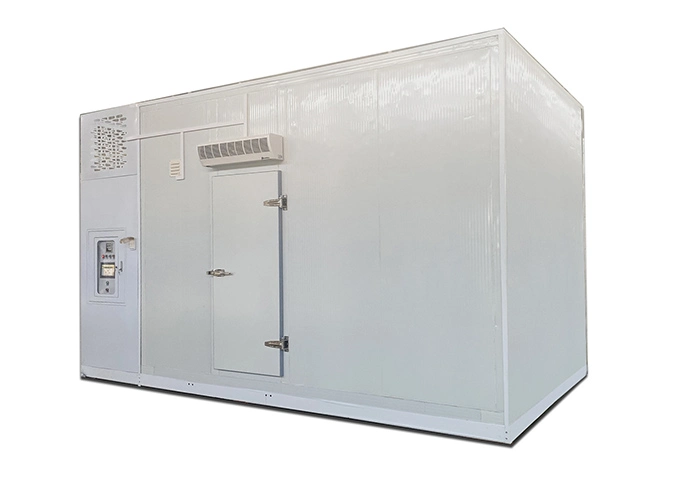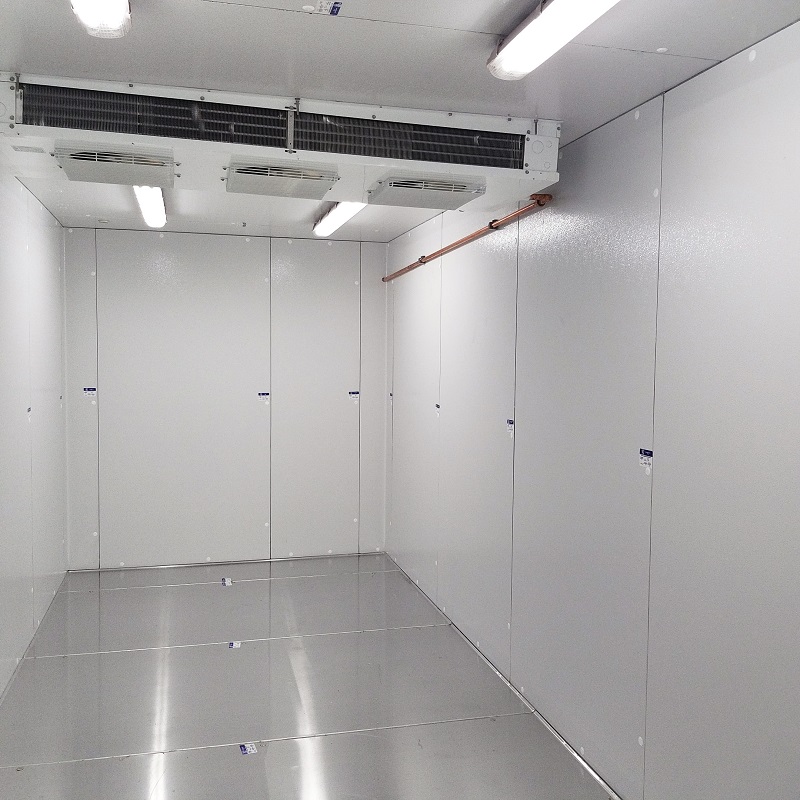In the world of commercial storage, terms like "cold room" and "freezer room" often pop up, especially in industries dealing with perishable goods. While they might seem similar at first glance, there are significant differences between the two. Both play a crucial role in preserving products, but they serve different purposes and operate at different temperature ranges. Understanding these differences can help businesses and individuals make informed decisions based on their specific needs.
Let’s dive deeper into what sets these two storage solutions apart.
A cold room is a temperature-controlled space primarily designed to store products at cool temperatures without freezing them. The purpose of a cold room is to extend the shelf life of products like fruits, vegetables, dairy, and other perishable items that do not need to be frozen but should be kept cool.
Common Uses of Cold Rooms
Cold rooms are widely used in various industries, such as:
Food and Beverage: To store fresh produce and perishable food items.
Pharmaceuticals: For the preservation of medicines and vaccines that require cool environments.
Floral Industry: To keep flowers fresh for longer periods.

On the other hand, a freezer room is designed to maintain sub-zero temperatures, typically below -18°C (-0.4°F). This extremely low temperature halts the growth of bacteria and helps keep frozen products safe for long-term storage. Freezer rooms are ideal for storing items like frozen meat, fish, ice cream, and pre-cooked meals.
Common Uses of Freezer Rooms
Industries that rely heavily on freezer rooms include:
Food Processing and Storage: For frozen meats, seafood, and other frozen food products.
Healthcare and Pharmaceuticals: For preserving biological samples and certain medications.
Retail and Wholesale: In supermarkets and distribution centers for frozen goods.

Cold Room Temperature Ranges
Cold rooms typically operate at temperatures ranging from 0°C to 10°C (32°F to 50°F). This is ideal for keeping products cool without freezing them, thus preventing spoilage while maintaining their freshness.
Freezer Room Temperature Ranges
Freezer rooms, in contrast, maintain much colder temperatures, often from -18°C to -25°C (-0.4°F to -13°F). These extreme temperatures ensure that food remains frozen and safe for extended periods.
Cold Room: Storing Fresh Products
Cold rooms are perfect for storing perishable products that need to be kept cool but should not be frozen. Fresh fruits, vegetables, eggs, and dairy products are often stored in cold rooms to retain their quality and extend their shelf life.
Freezer Room: Storing Frozen Products
Freezer rooms are specifically designed for storing frozen goods. Meats, fish, ice cream, and pre-cooked meals can be stored for months or even years without spoiling in these environments.
Insulation in Cold Rooms
Cold rooms require thick insulation, but not to the extent of freezer rooms. Insulation helps maintain stable temperatures and energy efficiency, ensuring that the cool environment is consistent.
Insulation in Freezer Rooms
Freezer rooms require far more robust insulation because of the lower temperatures. They need to be built with more durable materials to prevent frost buildup and to maintain constant sub-zero temperatures.
Energy Efficiency in Cold Rooms
Cold rooms consume less energy than freezer rooms because they operate at higher temperatures. Efficient insulation and modern refrigeration systems can further reduce energy costs.
Energy Usage in Freezer Rooms
Freezer rooms, due to their lower temperatures, consume more energy to maintain a freezing environment. They require more powerful refrigeration units and constant monitoring to ensure energy efficiency.
How Cold Room Refrigeration Works
Cold rooms use specialized refrigeration systems to keep the space at the desired temperature. These systems circulate cold air throughout the room, ensuring that products are stored in optimal conditions.
How Freezer Room Refrigeration Works
Freezer rooms rely on high-capacity refrigeration units that are capable of maintaining extremely low temperatures. These systems are more complex and often come with defrost cycles to prevent frost buildup inside the room.
Humidity Management in Cold Rooms
Cold rooms need proper humidity control to prevent condensation, which can cause mold growth and spoilage of stored goods. Humidity levels are carefully monitored and adjusted in cold rooms.
Humidity Levels in Freezer Rooms
Freezer rooms typically have low humidity levels due to the freezing conditions. Frost can form if humidity control is not managed properly, which can affect the quality of the stored products.
Cold Room Maintenance
Cold rooms require regular cleaning, temperature monitoring, and checking of refrigeration units to ensure optimal performance. Condensation and mold control are also crucial maintenance tasks.
Freezer Room Maintenance
Freezer rooms need more frequent maintenance due to the extreme temperatures. Regular defrosting, checking insulation, and ensuring that refrigeration units are working efficiently are key aspects of maintenance.
Cold Room Size Variations
Cold rooms come in a variety of sizes, from small walk-in coolers for restaurants to large cold storage units for warehouses. The size depends on the amount and type of products being stored.
Freezer Room Size Variations
Like cold rooms, freezer rooms also vary in size, but they are often larger to accommodate more products for long-term storage. Freezer rooms are a common feature in large-scale food production facilities and distribution centers.
Cost Considerations for Cold Rooms
Cold rooms are generally less expensive to install than freezer rooms because they require less insulation and less powerful refrigeration systems.
Cost Considerations for Freezer Rooms
Freezer rooms are more expensive due to the need for higher-capacity refrigeration units, thicker insulation, and additional maintenance requirements.
Safety Protocols for Cold Rooms
Cold rooms must adhere to safety protocols to ensure the health and safety of workers and products. Proper signage, temperature monitoring, and emergency exit mechanisms are essential.
Safety Protocols for Freezer Rooms
Safety in freezer rooms is even more critical due to the extreme temperatures. Workers must wear protective clothing, and rooms should be equipped with safety alarms and backup power in case of system failures.
When to Opt for a Cold Room
If you’re dealing with fresh produce, dairy, or products that require cool storage but not freezing, a cold room is the best option. It’s cost-effective and energy-efficient for items that need to stay cool without the risk of freezing.
When a Freezer Room is a Better Choice
For products that must remain frozen, such as meats, seafood, or ice cream, a freezer room is essential. It provides long-term preservation at sub-zero temperatures, ensuring that frozen goods stay safe and edible.
In summary, both cold rooms and freezer rooms are essential in various industries, but they serve different purposes. Cold rooms are designed for storing fresh products at cool temperatures, while freezer rooms maintain much colder temperatures to keep items frozen. From temperature ranges to energy consumption, insulation, and safety protocols, each room type has distinct characteristics that cater to specific storage needs.